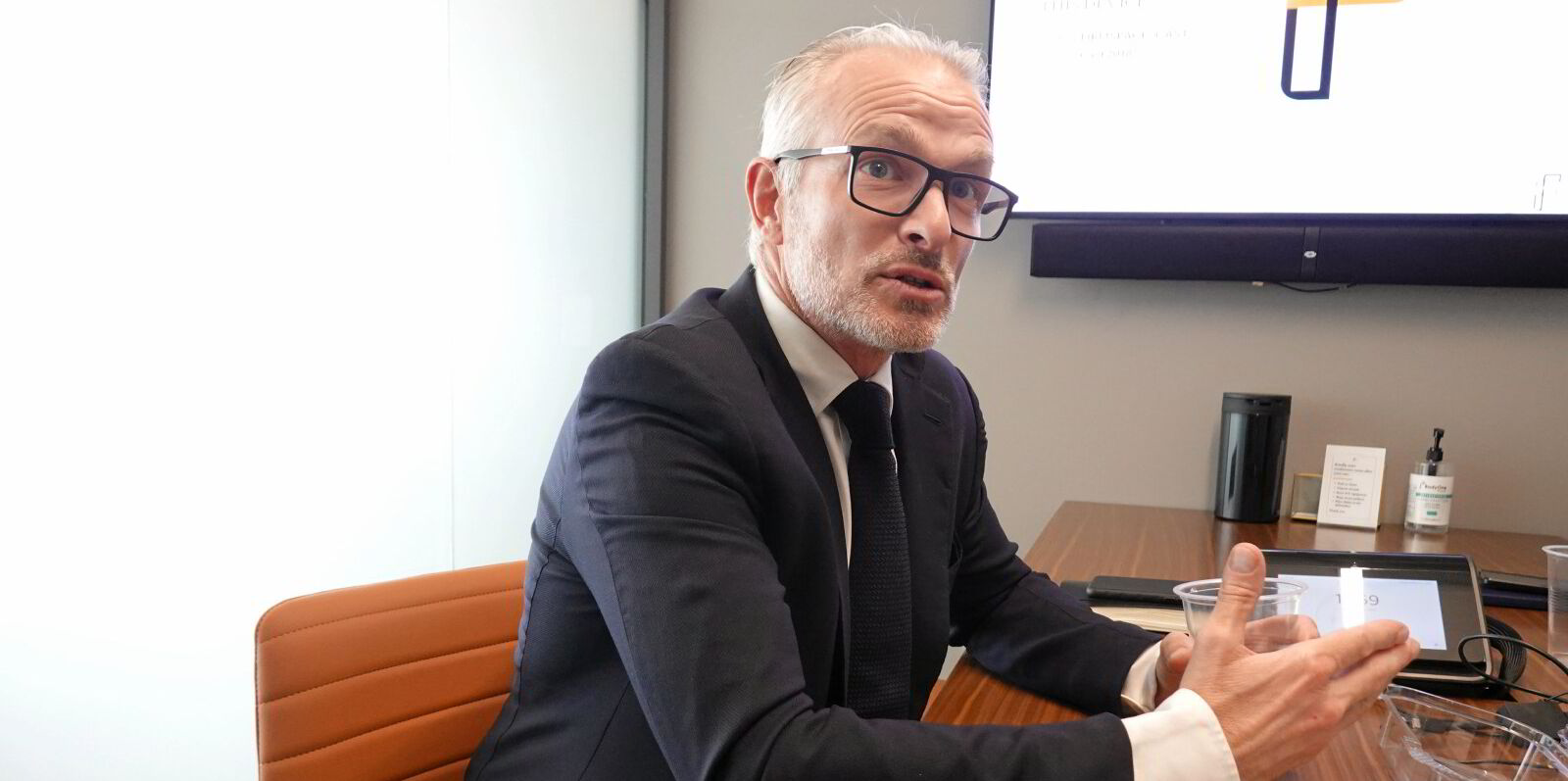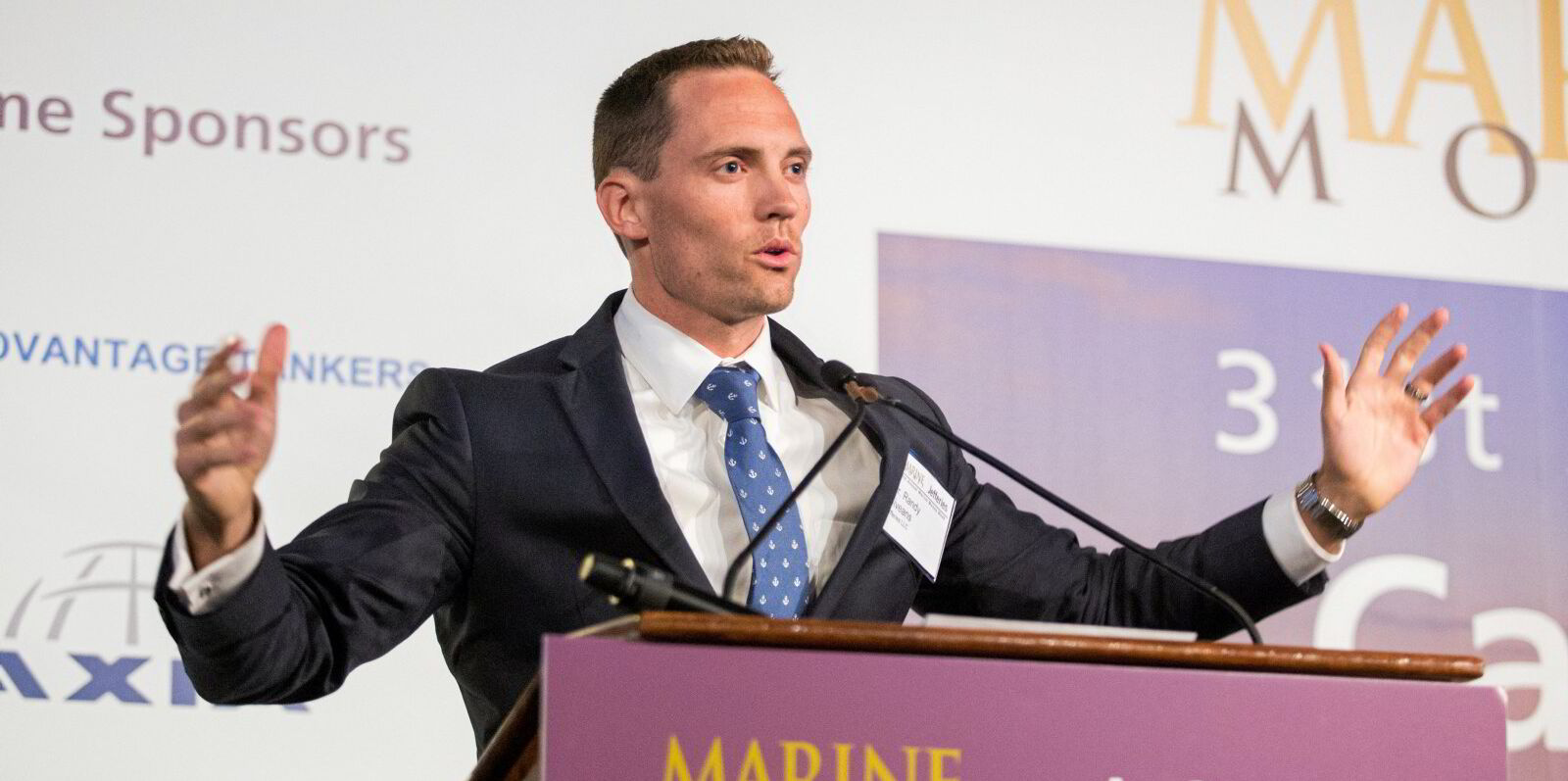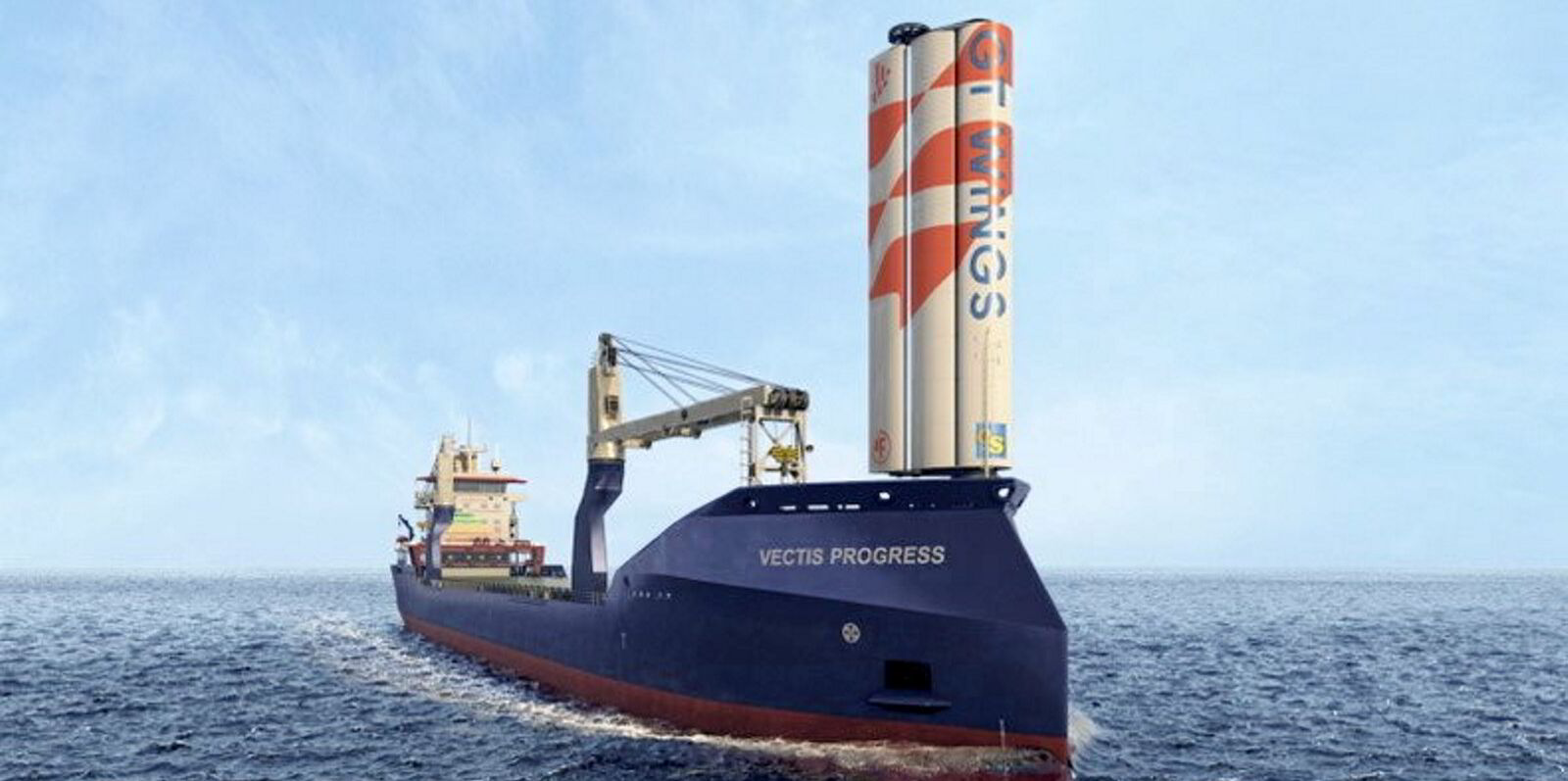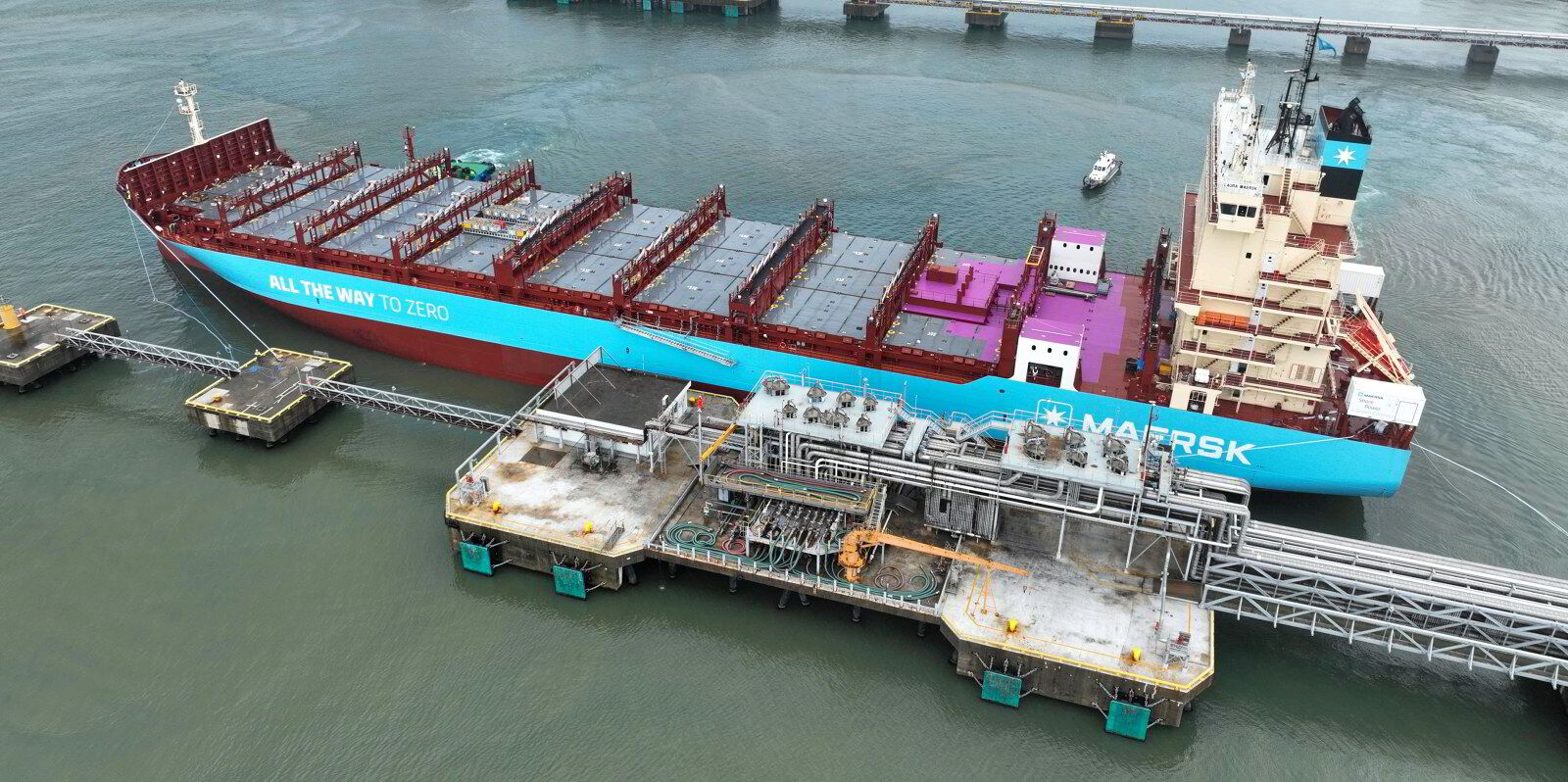The White House’s state dining room erupted into applause when US President Joe Biden signed the Inflation Reduction Act — and a plethora of projects took shape that would use the law’s funding to produce clean fuels for shipping and other industries.
Two years later and a fog of regulatory uncertainty has slowed many of those projects and put others on the shelf.
At the core of the issue lies the regulatory guidance that President Joe Biden’s administration must provide to implement the Inflation Reduction Act, which, despite its name, includes subsidies and tax credits for clean fuel production.

Many of the green fuels that shipping would benefit from are derivatives of hydrogen — which can have zero emissions when produced from renewable electricity.
But would-be green fuel producers are awaiting guidance from the US Treasury Department on what qualifies for the so-called 45V tax credits for green hydrogen.
Some projects are also waiting for information concerning another tax credit, 45Q, which would support carbon capture.
That guidance has taken longer than expected, impacting projects that would produce hydrogen derivatives, such as green methanol and ammonia.
In the US Gulf Coast, particularly in Texas, the Inflation Reduction Act led to excitement that the region could become a centre for green fuel production — thanks to existing infrastructure, a community of energy companies and supportive state governments.
Jeff Pollack, chief strategy and sustainability officer at the Port of Corpus Christi, said the region is well positioned to provide “decarbonised molecules” for markets in Europe and Asia, with trade routes that look much like those we see today for US exports of fossil fuels from the region.
But he said the push by start-ups to develop projects to produce those fuels has been “chilled” by the uncertainty around the tax credit guidance.
‘Chilling effect’
“We unfortunately had this chilling effect on that start-up sector in the merchant hydrogen space, which I think is an unintended consequence,” Pollack said.
Gregory Dolan, chief executive of the Methanol Institute, said that with the US Gulf Coast already a major hub for producing methanol, many in that space are looking to invest in technologies to increase production of the green version of the fuel.
“One of the things that will help determine the pace of growth of renewable methanol in particular is what happens with the Inflation Reduction Act and some of the tax credits that we expect to see under the IRA, in particular the 45V clean hydrogen tax credit, which we think will be really important for methanol,” he said, noting that the industry is waiting for final guidelines from the Treasury.

“So while there was a lot of talk about these IRA tax credits, particularly for hydrogen, we’re still waiting on final guidance. So there’s still a lot of investment sitting on the sidelines, waiting for those tax credits to become fully effective.”
Dolan said that some projects will continue to move forward without the guidance, including those producing methanol from biological waste rather than from renewable electricity, but others need to know what will qualify for the tax credits before they can press ahead.
One that is pressing ahead is Oberon Fuels, which has a pipeline of projects to produce dimethyl ether and methanol from biological sources, with multiple end-user industries in mind. The Treasury has provided guidance for biofuels.
Oberon chief executive Rebecca Boudreaux said the Inflation Reduction Act provides a powerful incentive for green fuel production, and she said each individual tax credit has its own uncertainties.
Leveraging incentives
“It’s about how do you leverage these very lucrative incentives that can help push production forward for very low carbon intensity fuels in the wake of uncertainty,” she said.
“And that’s where making multiple molecules that go into multiple sectors, because they each have different policy risk and different exposure to regulation in different geographies that they’re going into, enables us to diversify the risk but keep moving forward.”

Ammonia projects are also awaiting guidance from the Treasury.
Jean Perarnaud, chief executive of planned clean ammonia producer Ten08 Energy, said both the 45V hydrogen tax credit and the 45Q carbon capture rule are critical for the sector.
“If you don’t get it, you can’t make it work,” he said. “There’s no question about that.”
Perarnaud said that for green ammonia 99% of projects need that funding to move forward.
He said Ten08’s planned Texas facility can barely make producing blue ammonia doable without the carbon capture tax credits, and 45V provides more breathing room as the company plans to make a smaller quantity of the green version of the fuel.
“And I think that breathing room is necessary, because what we’re seeing is, obviously, inflation has been kicking in quite a lot, and the capex that we were looking at 18 months ago is not the same as it is today,” said Perarnaud.
For Mark Brownstein, senior vice president of energy transition at Environmental Defense Fund, the fundamental challenge facing Inflation Reduction Act funding is that, because it is a budget bill, the Treasury is responsible for implementing it.
Not core skills
And Treasury officials have good reason to proceed with caution.
“The US Department of Treasury is equipped to do many things, but understanding the nuances of hydrogen production or biofuels production is not in their core skill set,” he said, noting that the tax credits are very generous.
“They really are designed to help jump-start the fuels and the options and the industries that are incredibly important for the US economy to decarbonise, so it really is incumbent on Treasury to do their homework so that when we spend this money to subsidise these projects, we as American taxpayers are getting what we’re paying for.”
Many worry that the Treasury guidance may adopt a conservative approach to producing green hydrogen from renewable electricity, potentially imposing strict time constraints on producers.
At stake is the critical time gap, which could be reduced to just one hour, between the generation of renewable electricity and the subsequent production of green hydrogen from that power.
And the guidance could require newly built renewable power generation.
An executive at one fuel producer also complained that the draft guidance has geographical boundaries that hurt project economics by preventing, for example, the use of renewable energy in one region for hydrogen production in another. That creates the need to transport hydrogen instead of electricity.
Here are a few green incentives funded by the Inflation Reduction Act.
- 45Q: A tax credit for carbon capture and sequestration.
- 45V: A tax credit for green hydrogen produced with renewable electricity.
- 45Z: A tax credit for biofuels.
“I’m going to get the IRA money, but then I’m going have to spend maybe an extra $2 a kilogram to transport it,” he said.
“It’s a blocker because you’re still going to want to get the $3 credit — it’s too important not to have it — but then, because of how the zones are set up, now you’re saying, ‘I want the $3 credit, but I have to take $2 away from it to use it.’ So it’s essentially a $1 credit’.”
And after that, he said the fuel remains more expensive than Chinese projects, which produce hydrogen for $1 per kilogram.
“I think the philosophy of it being a supply-side subsidy hits the nail on the head, compared to the stuff that Europe is doing,” he said, noting that the US policy of giving credit for projects that are built provides more certainty than the European Union’s grants and auctions.
“There are refinements that can be done, taking into account producer or industry participants’ knowledge of how these markets work to be able to facilitate something that’s both economical and efficient at the same time.”
Layers of uncertainty
The Port of Corpus Christi’s Pollack said that the uncertainties surrounding the possible conservatism of the guidance could pose challenges for start-ups looking to purchase renewable electricity off the grid to produce green hydrogen.
But the lack of clarity around when the Treasury will issue this guidance has impacted projects that do not align with that model.

“There are other projects where the project had the wherewithal to produce their own electrons and, still, the temporal uncertainty around the guidance was enough for them to put their pencils down on projects that, frankly, look to us from the outside like they checked all the boxes,” he said.
“And that’s disappointing to see.”
Aviva Aron-Dine, a Treasury official performing the duties of assistant secretary for tax policy, recently highlighted the Biden administration’s progress in pushing forward the goals of the Inflation Reduction Act, finalising the guidance before the president’s term ends in January.
“By the end of this administration, we anticipate finalising regulations on a number of key provisions that are especially central to the IRA’s climate and economic goals,” she said.
But what happens after Biden leaves?
Randy Giveans, executive vice president of business development and investor relations at shipowner Navigator Gas, said the uncertainties have contributed to slower uptake of ammonia as a clean fuel and slower progress on clean production projects. His company carries ammonia in its ships and is an investor in Ten08 Energy.
Carbon capture credit
The uncertainties also include the Inflation Reduction Act tax credits for captured carbon, which is used to make blue fuels.
With an election ahead that could see either Democratic vice president Kamala Harris or Republican former president Donald Trump take the White House, Giveans does not believe the Inflation Reduction Act support will go away. After all, many Republican-dominated states stand to benefit from green fuel production.

But he said the uncertainties could still be a game changer.
“If there wasn’t uncertainties, these projects would have already been taken FID,” he said, referring to a final investment decision.
“So because of that, it is keeping people on the sidelines or moving more gingerly than if you knew for sure,” he said. “Because of the uncertainty, it’s hard to take an aggressive stance.”
But the uncertainty may not stop all projects in their tracks.
Pollack, who says the Port of Corpus Christi sees itself as a future landlord for green fuel export projects and a facilitator of infrastructure sharing, said that the current policy direction in Washington favours the production of electricity and hydrogen in the same location, and said that the economics of transporting the fuel by pipeline are looking better.
“There’s a natural opportunity for players in the incumbent energy space, in tandem with renewable developers, to build these fully integrated projects that are either aligned well with or impervious to, depending how you look at it, the 45V guidance,” he said.
That is, the big energy companies that are already abundant in the US Gulf Coast may be in a position to take clean fuel production forward.






